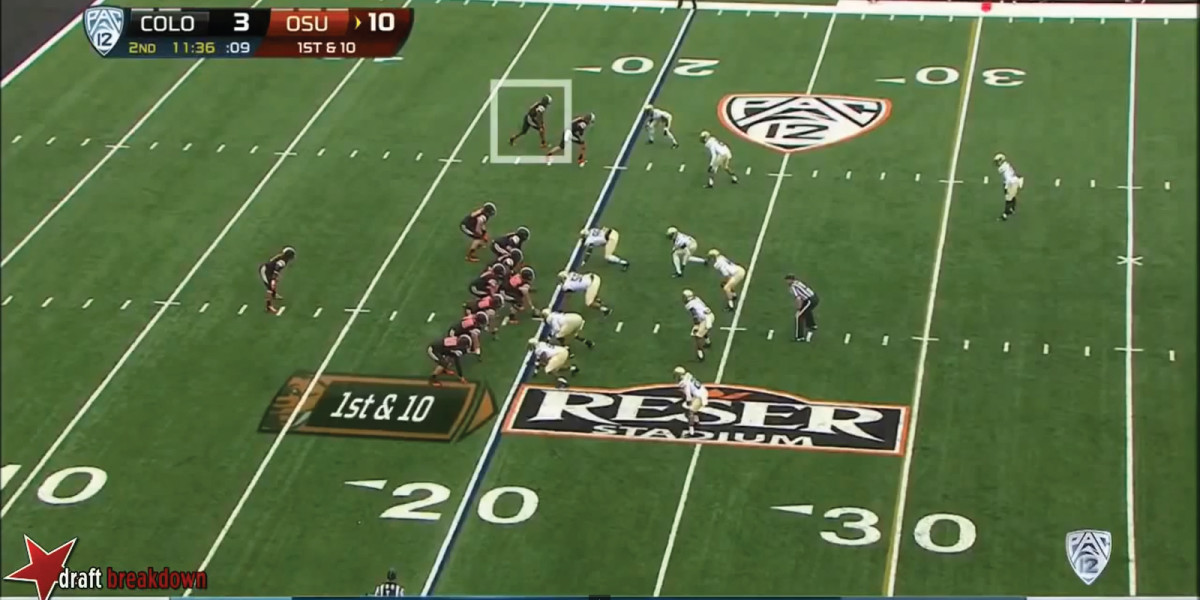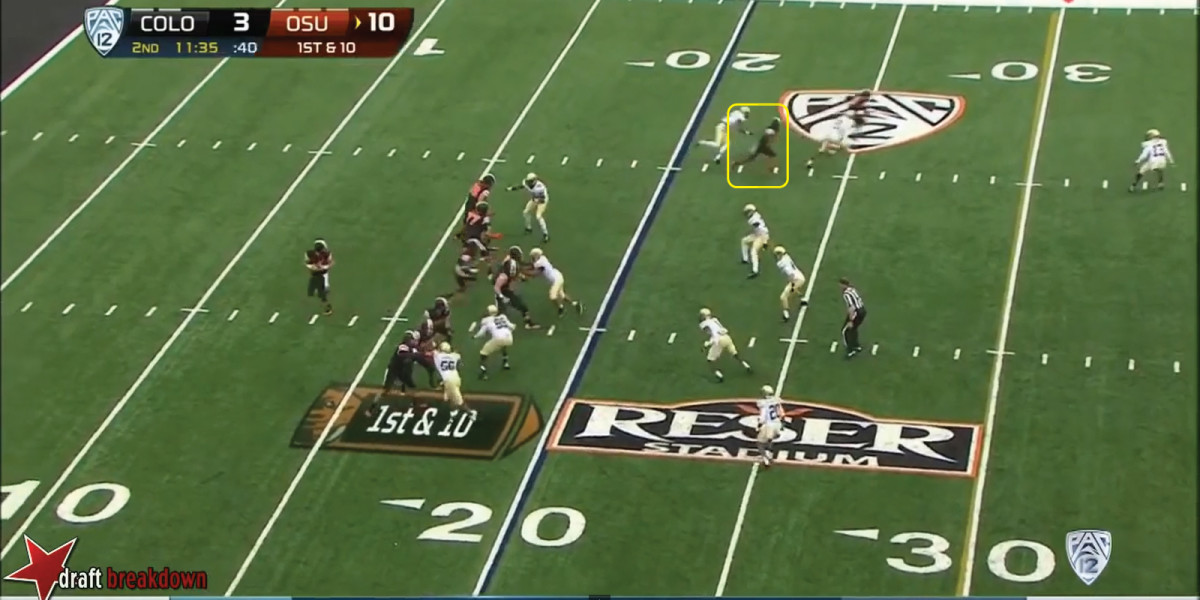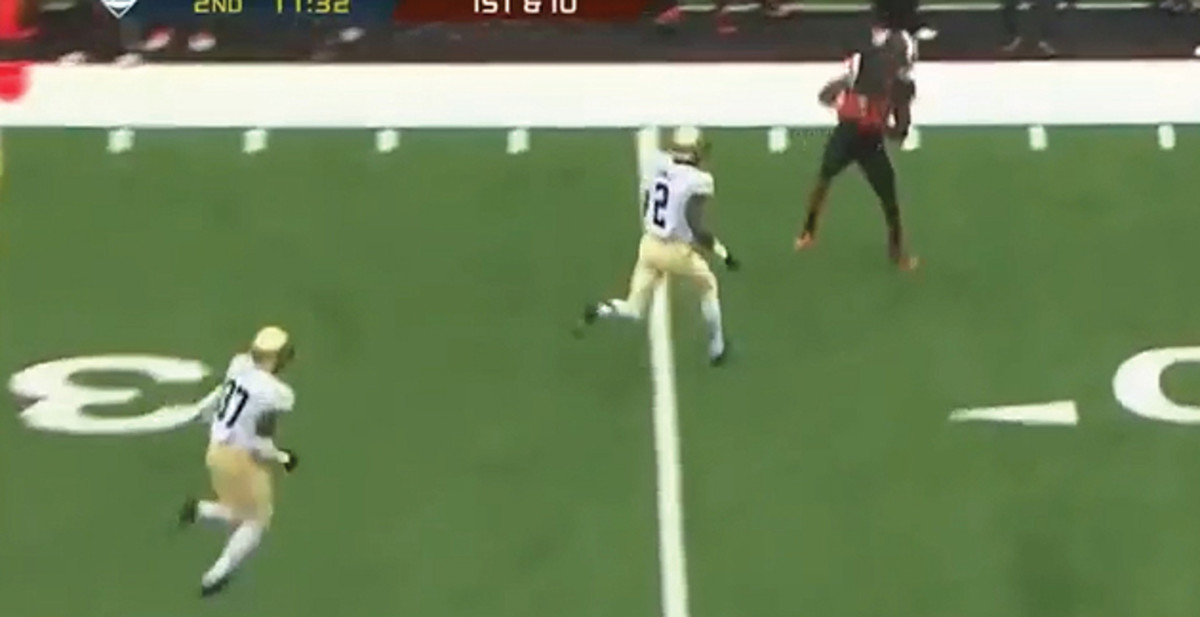The All-22: How Brandin Cooks could redefine New Orleans' offense
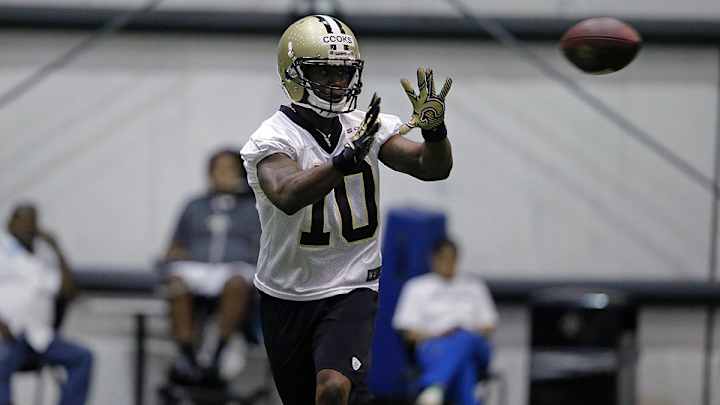
Since he became the New Orleans Saints' head coach and offensive mastermind in 2006, Sean Payton has always endeavored to put his skill players in unusual positions to make plays. Reggie Bush, the team's first-round pick in that first season, caught a career-high 88 passes, and brought in 294 for the team over five seasons. Payton's preference for motioning Bush from the backfield to the slot pre-snap caused defenses to alter their coverage paradigms because he presented an unpleasant problem for third linebackers when he became an extra receiver. Defenses started using more nickel against the Saints, subbing out their third 'backers for fifth defensive backs, which of course helped New Orleans' underrated run game. This was especially effective in 2009, the season in which the Saints won their only Super Bowl.
When Bush was replaced with Darren Sproles in 2011, that paradigm continued. Sproles was uniquely talented, and could alternate between so many places in the formation as a runner and receiver. He was Drew Brees' second "satellite back" -- the player who could force defensive uncertainty with his mere presence on the field.
But when the Saints traded Sproles to the Eagles in March, a new weapon was needed. Payton and Brees found the next iteration of their satellite player in a receiver, not a running back: Oregon State's Brandin Cooks. New Orleans took Cooks with the 20th overall pick, and many thought that Cooks would be used as a volume receiver more than anything else. It would make sense -- after all, he led the nation in 2013 with 1,730 receiving yards, catching 128 passes and scoring 16 touchdowns. But when USA Today's Tom Peliserro asked Brees about Cooks' potential in Payton's multiple offenses, a different story was told: Cooks was the next in a line of innovative ideas.
Audibles Podcast: Breaking down the offseason in the NFC South
“Even though Darren Sproles played the running back position, we were creative with him,” Brees said. “We did a lot of things with him out of the backfield. We’d split him out. We’d throw him screens. We’d do all kinds of stuff with him. So, that role can be filled by maybe even a receiver.
“Hey, we go out in the draft and get a guy in Brandin Cooks out of Oregon State – an explosive player, great speed, great talent, tremendous young man, loves to learn, loves the game of football. … From all indications, this guy can do a lot of things for us, and he’s eager to fill a role that we need him to on offense.”
A role? More like roles, plural. And as it turns out, the college tape shows that Cooks is uniquely qualified to do just that. The Saints create separation with as diverse a series of schemes as any team in the NFL, and there are similarities between what Brees calls and what Cooks was involved in at Oregon State. This sweep at the start of the Beavers' 38-23 win over Boise State in the Hawaii Bowl on Dec. 24 was an ideal example of how defenses must alter their approaches to account for Cooks as a potential runner.
What Boise State did not do on this play was to drop one of their safeties down to mirror Cooks in motion. Oregon, for one, had done so earlier in the season and was able to contain Cooks in a relative sense. But the Broncos didn't have anyone who could match Cooks' short-area speed, and with nobody to close in on him at the right time, Cooks got to the second level quickly and with little resistance.
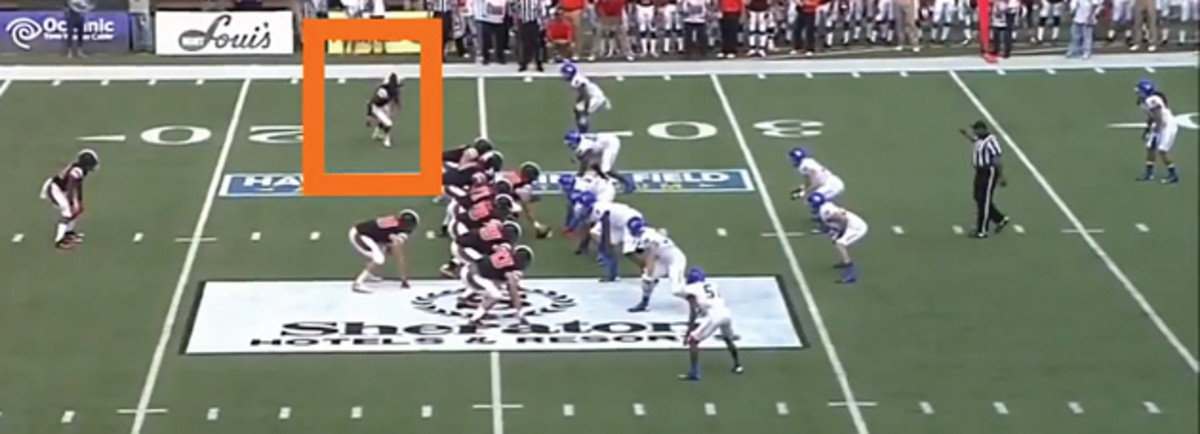
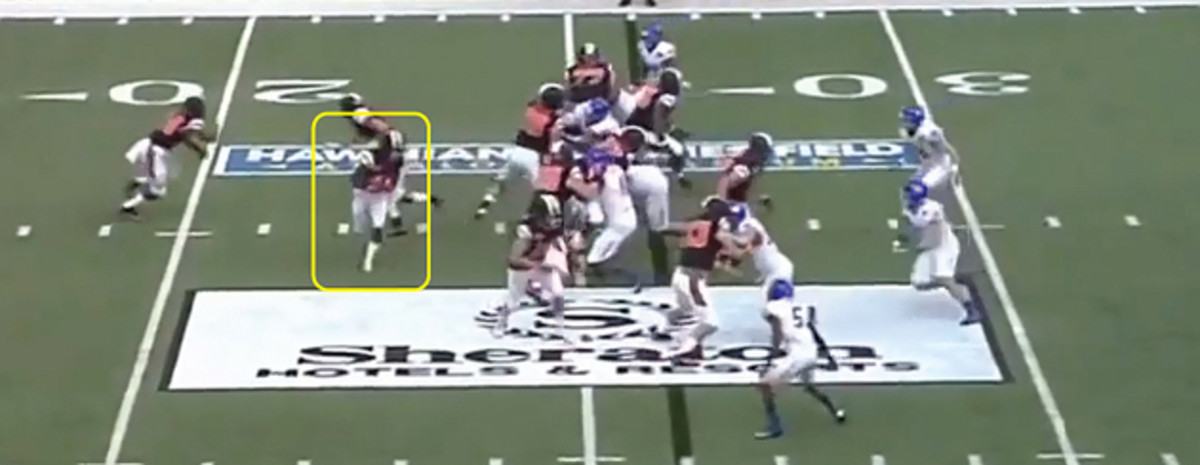
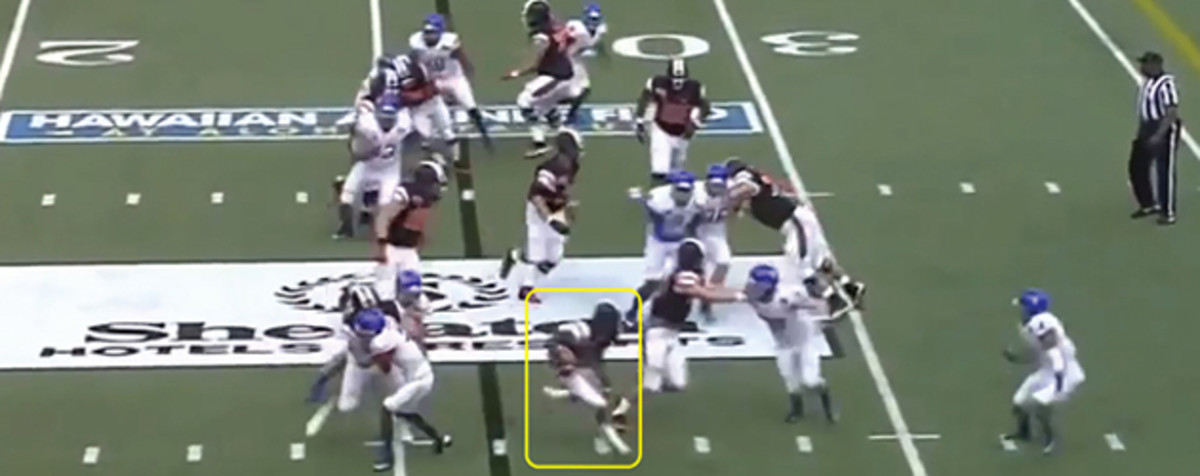
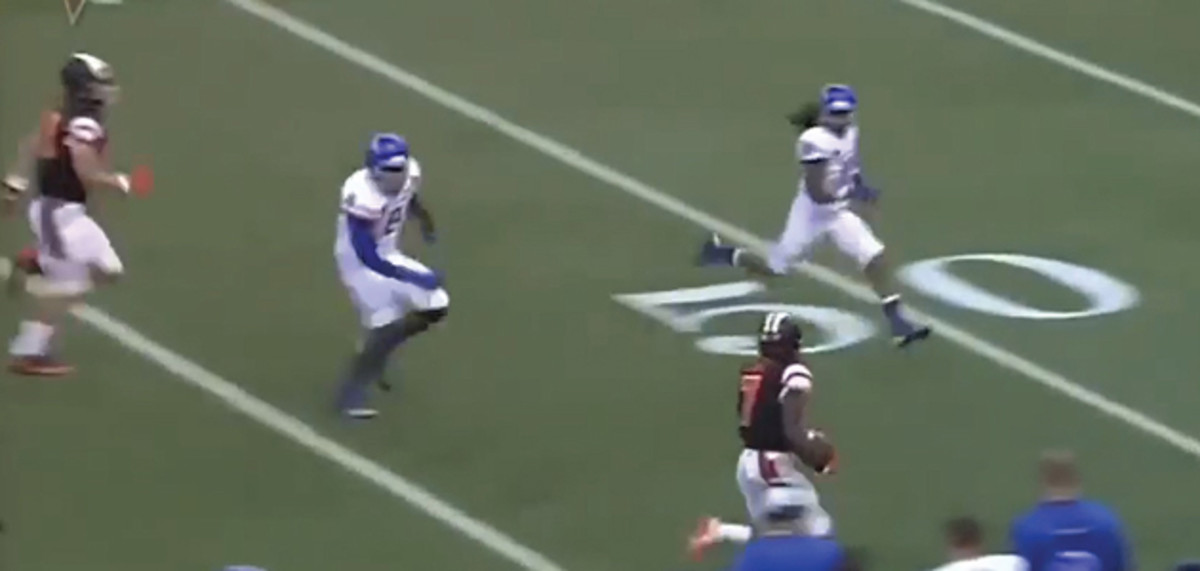
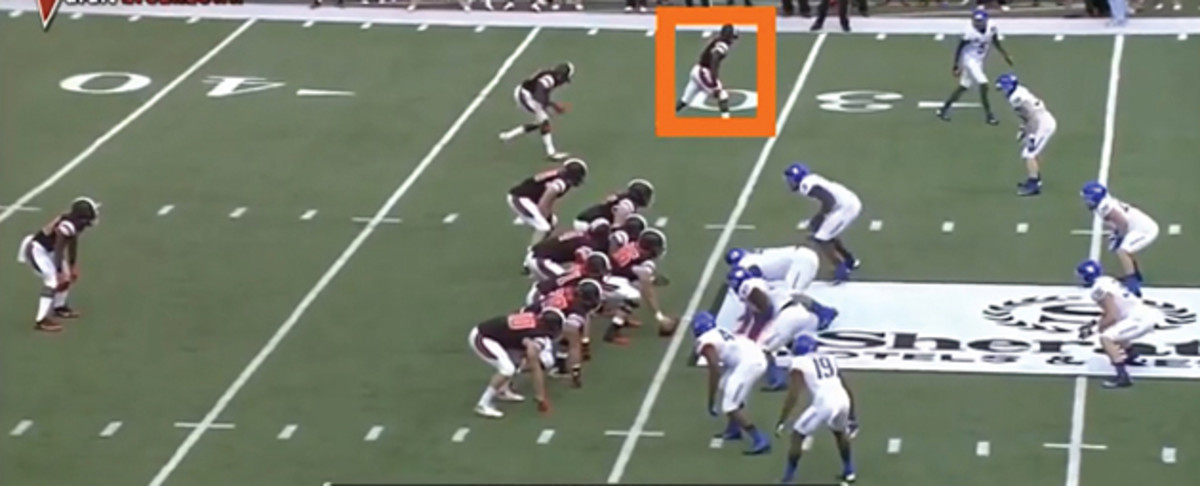
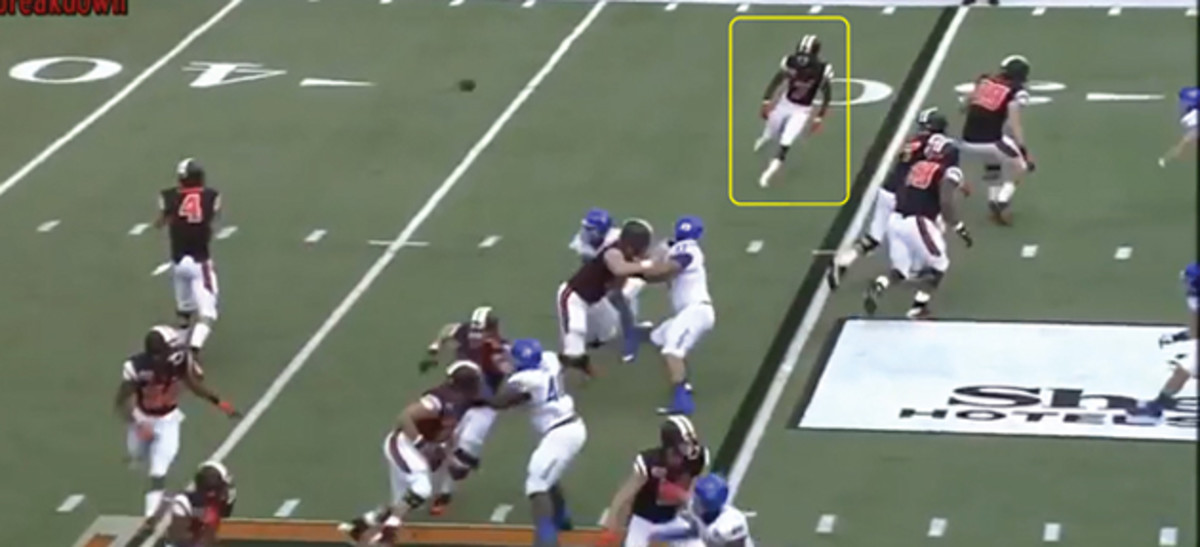
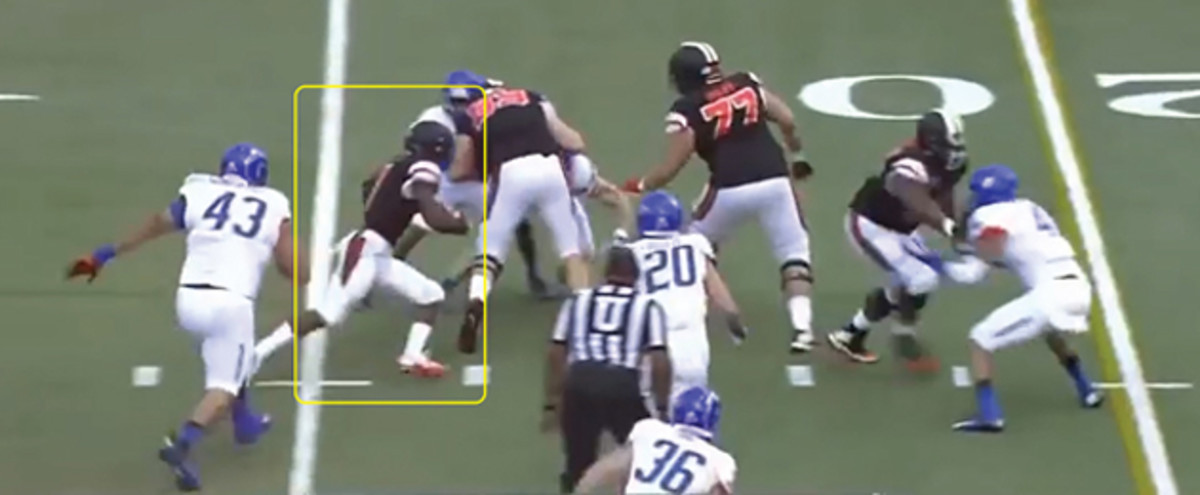
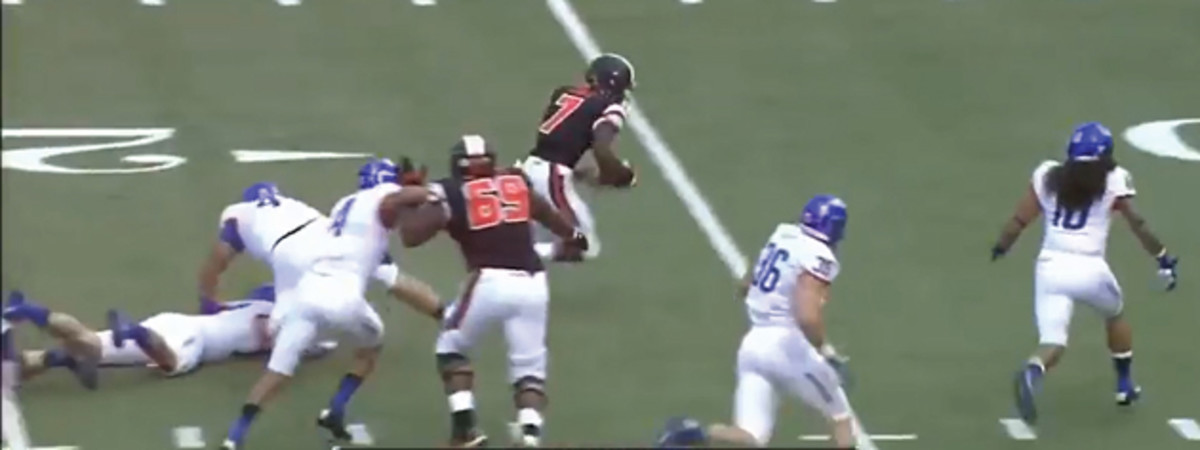
Another way in which the Saints will surely use Cooks is in twin and stack release concepts. New Orleans uses these quite often in the passing game, and Sproles was frequently involved, especially in the inside slot. In these schemes, receivers are grouped tightly together, either slightly offset or with one on the line of scrimmage and the other about a yard behind. In Oregon State's 44-17 win over Colorado on Sept. 28, Cooks showed how he gets free and upfield using a similar idea. The result was a 36-yard gain.
